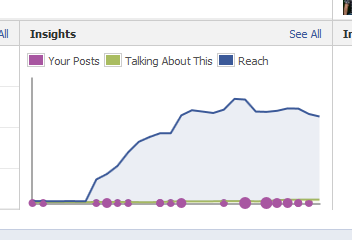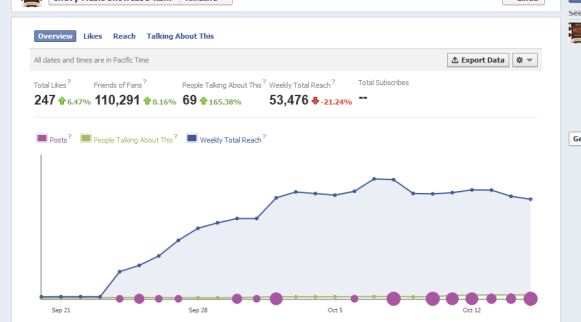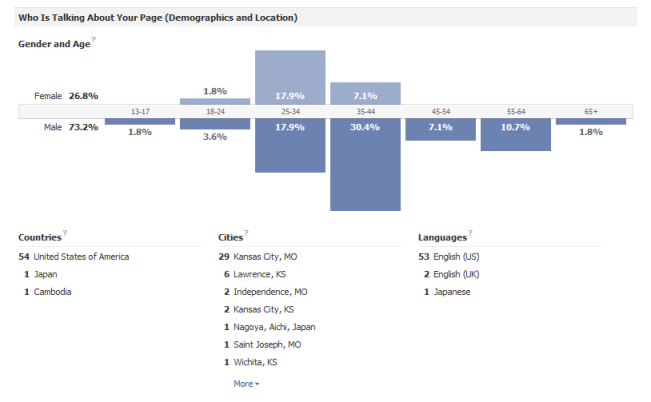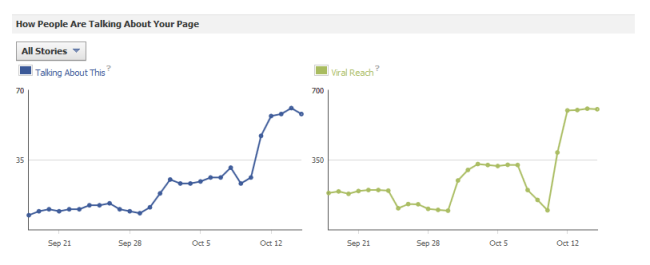Well, I’ve managed to crank out yet another Chris Miller Digital weekly newsletter, and here ya go. This week: an expensive social media mistake to avoid; why doing is better than seeing online; and two digital ideas with the holidays coming up.
$$$OCIAL MEDIA
 Even if you aren’t spending an extra dime on your radio station’s Facebook and Twitter efforts, they can distract you and cause you to be unproductive. The time you and others at your stations spend on social media may lead to lost man-(and-woman)-hours.
Even if you aren’t spending an extra dime on your radio station’s Facebook and Twitter efforts, they can distract you and cause you to be unproductive. The time you and others at your stations spend on social media may lead to lost man-(and-woman)-hours.
Tell the promotion people that social media isn’t just about raising awareness. Tell the air talent that it’s not just about more and more content. Tell the sales people that this is not the place to cut and paste and post commercial copy.
It’s about getting your fans to do what they will enjoy doing, which means using your brand more. For your benefit, you want to move them to one of the several platforms that you get measured on, such as your broadcast, your website, your stream, your email list, and so on.
Now, as part of moving people from social media to your other stuff, you want to play the game so you win. That means, for example, on Facebook that likes, shares and comments help raise the chances that you get seen on that site! However, your overall goal is not to get more likes, shares and comments. That’s just a means to an end. Your goal is to get more listening occasions, more site visits, more streaming use, and more email or text signups.
By the way, one of the most powerful ways to increase the amount of your social media followers is to commit to promoting it on your air. The digital world changes very quickly, and it’s already passe’ to simply say, “Follow us on Facebook” or “Find us on Twitter.” What’s the benefit in doing so? What’s in it for them? Social media is already no longer the hot, new thing. It’s part of the fabric of people’s lives, and those lives are busy these days.
SEEING VS. DOING AT YOUR WEBSITE
Like a lot of businesses, radio station websites go through three basic stages in their evolution. They are:
- What do we want to put on our site?
- What do our listeners want to see on our site?
- What do our listeners want to DO on our site?
I’m sure that you understand why the jump from #1 to #2 is so important. Hey, we’re all media people here, right? We understand that no radio or TV station or print publication can exist if it’s not about something. Even TV network affiliates, which may run a wide variety of programming, usually focus most of their energies on one thing, like their local news shows.
The same holds true with your website. When you begin to consider what belongs there and what doesn’t belong there, from your listener’s point of view, you’ve made a big step.
The next step, from #2 to #3, has been made by a lot fewer radio stations. When you think of your site only in terms of content … or what people will see there … it’s easy to think about your site as a hungry mouth that constantly needs to be fed. You can lose track of the look and feel and organization of your site, but dang it, you’re getting more content up there for people to see!
Here’s where you want to start thinking like Facebook or YouTube or Google. What do people do when they get to your site? How do they use you?
Facebook has a ton of content, but that’s because you can use it to find friends and communicate with them. YouTube has lots of content too, but it’s because that site is used for posting, viewing and sharing videos. Google has almost no content of its own; I just counted 41 words on their home page this morning. Yet, it’s one of the most used sites in the world, and it’s all about search. That’s pretty useful.
 So, what are YOU good for? Your fans can use you to find a song that you played, listen to you online, find something fun to do in town, learn more about something your morning show or a talk show said. Maybe you have one of those points programs for frequent listeners. Perhaps you have a page where people can learn about new music. If you’re a talk station, people use you to keep up on the latest news.
So, what are YOU good for? Your fans can use you to find a song that you played, listen to you online, find something fun to do in town, learn more about something your morning show or a talk show said. Maybe you have one of those points programs for frequent listeners. Perhaps you have a page where people can learn about new music. If you’re a talk station, people use you to keep up on the latest news.
Aside from whatever content you have posted, activities like the above … the things people can DO at your site … are often our big traffic drivers. Seems to me you could work smarter instead of harder if you started focusing some more on usability … what people can do at your website.
HOLIDAYS: SOME OBJECTS ARE CLOSER THAN THEY APPEAR
From today (10/2/12), there are only 51 days ’til Thanksgiving.
 With that in mind, I just wanted to hit you with two thoughts about what you do online this season.
With that in mind, I just wanted to hit you with two thoughts about what you do online this season.
- More and more people are looking at your site or emails using a phone. They’re doing so at times where they’re time-limited (often passing a minute or two or three between other activities).
- Almost everyone is busier at the holidays that at other times of year.
Just me thinking out loud … what you post online during the holidays probably ought to be as short and concise as possible with those points in mind. Remember, bullet points are easier to read than paragraphs.
A HOME FOR HOT BABES
 The RadioInfo.com folks used another piece of mine this week. A Good New Home for Hot Babes is specifically about those male-skewing stations that have big hot babe galleries. It’s pertinent for anyone who’s getting lots of website visits for content that has nothing really to do with your radio station. I propose a solution that should be better than what you’re doing now!
The RadioInfo.com folks used another piece of mine this week. A Good New Home for Hot Babes is specifically about those male-skewing stations that have big hot babe galleries. It’s pertinent for anyone who’s getting lots of website visits for content that has nothing really to do with your radio station. I propose a solution that should be better than what you’re doing now!
TOP SECRET DIGITAL HELP
 There’s a secret, secret site where I post ideas and tips I find online that I think will help you grow your brand. Well, OK, I lied; it’s not so secret, but that kind of stuff is there, freshly updated all the time, at the Chris Miller Digital page on Facebook.
There’s a secret, secret site where I post ideas and tips I find online that I think will help you grow your brand. Well, OK, I lied; it’s not so secret, but that kind of stuff is there, freshly updated all the time, at the Chris Miller Digital page on Facebook.
 I’m a former major-market radio programmer who’s been working in digital media for the last couple of years.
I’m a former major-market radio programmer who’s been working in digital media for the last couple of years.

























